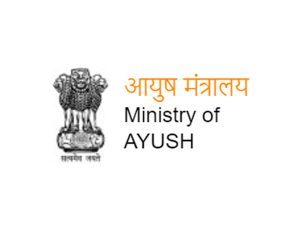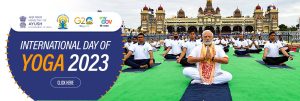The Age of Antibiotics and Ayurveda
48 min read
It is ironic that this humbled fungus, hailed as a benefactor of mankind,
may by its very success prove to be a deciding factor in the decline of the
present civilization.
-Dr. John I. Pitt, The Genus Penicillium, Academic Press, 1979
For the students of science and the medical fraternity, it was a momentous occasion when in an unprecedented experiment which is ‘first of its kind in the world,’ where a group of doctors and surgeons successfully operated upon an 83-year- old man removing a massive 240 gm of prostate, without using antibiotics.
Conducted on the 1 st of March 2016, the four hour long operation made Meerut, a small town outside of New Delhi, which was earlier known for India’s first war of independence against the British in 1857, a cynosure of the medical world. The unique thing about the operation was that the surgeons only used anaesthesia but no antibiotics were used before, during or in the post-operation recovery of the patient and traditional Ayurvedic medicines were instead utilized in the process.
Currently, antibiotics are an inseparable part of the standard operating procedure. It started all the way back in the year 1928 when a Scottish scientist, Alexander Fleming, chanced upon the discovery of penicillin-which was a mixed blessing. It was a revolution of a kind as it transformed the sphere of public health dramatically. Not only the once-fatal bacterial infections became curable but also the infection-risks associated with surgical procedures diminished greatly. It lead to health systems becoming more effective and also more equitable because both the rich and poor alike secured access to the medication needed to treat many infections and stay healthy and productive.
Interest in fighting bacteria proliferated like a mania in the pharmaceutical world and fuelled the race to discover ever more antibiotics. Pharmaceutical companies started a sales blitzkrieg on doctors’ offices and hospitals, with studies, graphs, charts and convincing statistics gathered from the research usually funded by their own companies, and with the basic intent on convincing physicians that their antibiotic was better than the others. Objectivity of the research often becomes the first victim in such conflict of interests.
Antibiotics are dangerous mycotoxins — fungal metabolites- which indiscriminately kill both the good and hostile bacteria. The good flora of bacteria which includes Lactobacillus acidophilus, Bifidus and Bulgaricusprotect us against pathogens such as Salmonella, Yeast, Cholera, and the bad E. Coli. Unfortunately, these good floras are highly vulnerable to antibiotics and once killed, these friendly bacteria are replaced by hostile bacteria such as Pseudomonas, Clostridium, and Klebsiella, and by Candida yeast, a powerful member of the fungi family, leading to severe health risks.
As a result, in less than a century, inappropriate use of antibiotics, their widespread abuse for commercial gains, and a host of other misuse has led to antibiotic resistance, resulting in approximately 700, 000 people dying each year from conditions that were once easily curable.
Over 100 countries have reported the cases of drug-resistant tuberculosis.The resistance towards the HIV drugs is rising and the hospital acquired infections with highly drug resistant organisms are now becoming daily realities. If the present trends continue, by 2050, rising AMR (antimicrobial resistance) will contribute to more than 10 million deaths worldwide. We are now in a brave new world where the efficacy of antibiotics is under threat and in the looming post-antibiotic era pathologies like skin sores and diarrhea could become untreatable and life-saving surgeries would become increasingly risky.
Since drug resistant genes can easily travel across the national borders,antimicrobial resistance is a looming health crisis that requires both global and local solutions. It is not only a big impediment to secure the United Nations’ Sustainable Development Goals for the peoples of the world but also a severe threat to global security and the economic stability of the world which should be addressed on an emergency basis.
The United Nations’ World Health Organisation (WHO) recommends the key strategy to deal with antimicrobial resistance is to have a holistic and multi-sectoral “one health” strategy. Any holistic health strategy to deal with AMR shall be incomplete without the consideration and inclusion of traditional medicinal sciences like Ayurveda.
Amongst the team members of Ayurveda specialists who were consulted for the surgery conducted in India on the 1 st of March 2016 was Dr. Swastik Jain of Ayush Darpan Foundation. Unlike the standard operatingprocedures (SOP) which involve the use of modern antibiotics to reduce the incidence of surgical site infection, the team of doctors used traditional Ayurvedic herbs such as Amla (Phyllanthus emblica), Turmeric (Curcuma longa), Shigru (Moringa oleifera) and Guggul (Commiphora wightii),instead of antibiotics during the surgery.
The four-hour long operation conducted by the surgeons involved the use of anesthesia but no antibiotics before, during or post-operation recovery.After the operation, the patient was kept under observation for a month and is said to have fully recovered now.
Dr. Navin Joshi of Ayush Darpan Foundation mentions that the standard Ayurvedic texts mention about medicines which can successfully replace allopathic drugs used in surgery and to keep the antibiotics away.There are preparations such as those comprising extracts of Shigru (Moringa oleifera), Amla (Phyllanthus emblica), Giloy (Tinospora cordifolia), Turmeric (Curcuma longa) and Guggul (Commiphora wightii) which have significant anti-microbial properties. Shigru is used for mild infections and is also a natural painkiller whereas Amla increases immunity while Giloy is helpful in detoxifying liver. However, any such exercise should only be undertaken only after an expert advice with a professionally trained and experienced Vaidya as Ayurveda is a highly specialized field.
However, it is to be noted that the successful operation of the prostrate in India without the use of antibiotics is not the only example that underlines the relevance of traditional medicinal systems to address modern pathologies. In 2015, Tu Youyou of China was awarded the Nobel Prize for medicine for her work in helping to create an anti-malaria medicine. The 85 year old Nobel Laureate from China doesn’t have a medical degree or a PhD but consulted the ancient Chinese texts to study how best to extract the compound for use in medicine in the fight against malaria. In China, she is being called the ‘Three Noes’ winner- no medical degree, no doctorate, and she hasn’t worked overseas.
When Tu started her search for an anti-malarial drug, over 240,000 compounds around the world had already been tested, without any success.Finally, the team she lead found a brief reference to one substance, sweet wormwood (Artemesia annua), which had been used to treat malaria in China around 400 CE. It is to be noted that traditional Chinese medicine like other traditional medicine systems of the world is also heavily influenced by Ayurveda as it was carried to China along with the Buddhist monks Dharmaratna, Kasyapa Matanga, and Bodhidharma who took Dhamma to the land starting from the 1 st century CE onward.
So at a time when the Centre for Disease Dynamics, Economics & ; Policy (CDDEP), in Washington DC, specifically mentions that drug-resistant antibiotics are increasingly becoming prevalent and if the problem is not addressed sooner than later antibiotic resistance could create a world in which invasive surgeries will be impossible and people will routinely die of simple bacterial infections, the important role of Ayurveda comes into picture to address the situation but it demands an extraordinary strong political will of the international community.
In 1967, Communist leader Mao Zedong decided there was an urgent national need to find a cure for malaria because at the time, malaria spread by mosquitoes was decimating Chinese soldiers fighting Americans in the jungles of northern Vietnam. Tu Youyou started her malaria research after she was recruited to a top-secret government unit known as ;Mission 523 and dispatched to the southern Chinese island of Hainan to study how malaria threatened human health. Mission 523 pored over ancient books to find historical methods of fighting malaria. The team isolated one active compound in wormwood (Artemesia annua), artemsinin, which appeared to battle malaria-friendly parasites and after another careful reading, Tu Youyou tweaked the drug recipe one final time, heating the extract without allowing it to reach boiling point.
The example of a strong political will expressed by China to counter malaria has to be followed by the international community both in spirit and action, if it wants to succeed in its battle against anti microbial resistance. Since 2010, several Regional Committee Resolutions of the WHO on the prevention and containment of AMR have been adopted which emphasize that “combating antimicrobial resistance shall require political commitment, multi-sectoral coordination, sustained investment and technical assistance,” and call on the Member States to put AMR as one of the top priorities on their national agendas. The 2011 Jaipur declaration of the WHO advocated for a holistic and multidisciplinary approach to the control and prevention of resistance to antimicrobials.
Ayurveda has to be an integral part of this holistic and multidisciplinary approach towards the control and prevention of antimicrobial resistance.The government of India has to prioritise and take a lead in the field as the country is home to Ayurveda. In addition, trans-national university collaborations with premier Ayurvedic research institutions in India such as the Gujarat Ayurved University in Jamnagar or the Banaras Hindu University (BHU) etc. that specifically explore the relevance of Ayurveda would play an important role in introducing new medical preparations to address the issue of combating antimicrobial resistance. These steps would lead towards international collaborations that stir innovation processes in the areas of research and establish new industries.
Tu Youyou’s success story also necessitates a sound knowledge of the language in which the ancient texts are written so that they could be comprehended properly and with accuracy. The practice is not only limited to the study of ancient cultures, and is perhaps the reason why people take to the study the English language to appreciate the works of William Shakespeare fully or the medical students from non-English speaking countries take IELTS or TOEFL examinations if they want to pursue medical studies in the United States or the United Kingdom, and the same language becomes the medium for their future research.
However, I was very surprised to find out that people in the Western Universities who usually write about Ayurveda have the knowledge of the Sanskrit language as that of only a dictionary pundit. During my interactions with many able Vaidyas, they confessed that one finds it very difficult to imbibe the immense knowledge encompassed in any standard Ayurvedic text whether it is by Charak or Sushruta, and therefore pursue as pecific area in the field.
Though noted scholar and the founder-director of the Infinity Foundationin the US, Rajiv Malhotra is taking up the battle for Sanskrit, this is a very serious challenge which needs to be addressed professionally by the academia. One knows that Vikram Seth has done justice to the works of Faiz as his translations and interpretation are able to convey the very essence of the poetry successfully in the cross-cultural language shift. The same goes for the knowledge in the ancient texts. It was reported in April 2015 by Daily Mail, a popular British newspaper, that in Germany, Sanskrit is being taught in 14 universities. More recently, the government of India decided to introduce Sanskrit education in the IITs but much more needs to be done especially in the field of medical education and other scientific disciplines, if one has to deliver wellness and health in a holistic manner to the peoples of the world. Any professional study of the Ayurvedic texts needs rigour and discipline, and a diligent multi-pronged approach at the local, national, and international levels.
It can be said that though the discovery of antibiotics may have been accidental, their demise is our own making. The stakes are extremely high in the battle against anti-microbial resistance and we should be prepared for a post-antibiotic era.
The international community should take an immediate note of the relevance of traditional medicine systems like Ayurveda to deal with the issue of microbial resistance, and should collaborate to specifically introduce it in the draft of the resolution on anti-microbial resistance which shall be introduced at the United Nations General Assembly later this year, and the momentum should continue to guard our health security, so that the hardships to families, societies and countries be ameliorated.
* Pt. Manish Uprety F.R.A.S. is an ex- diplomat and a co-founder of the Ayush Darpan Foundation-India





